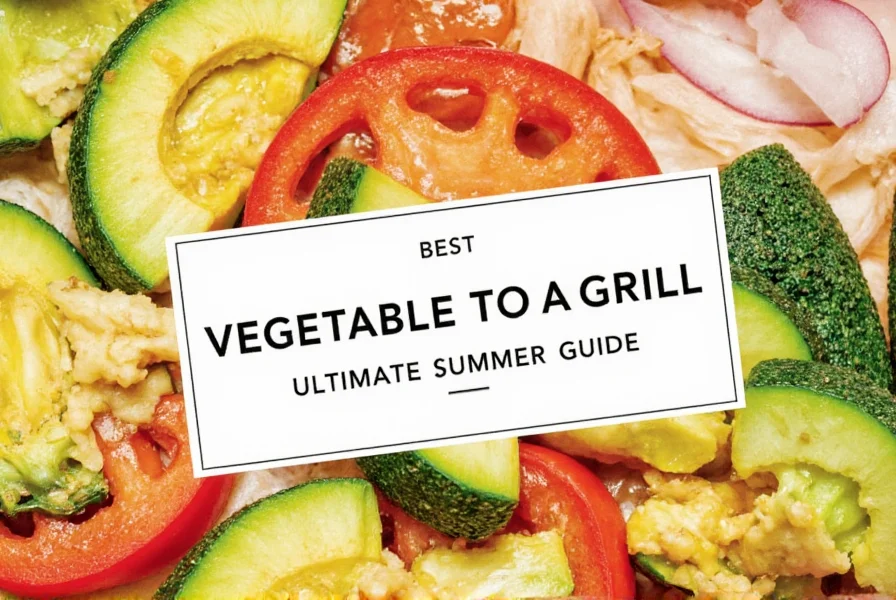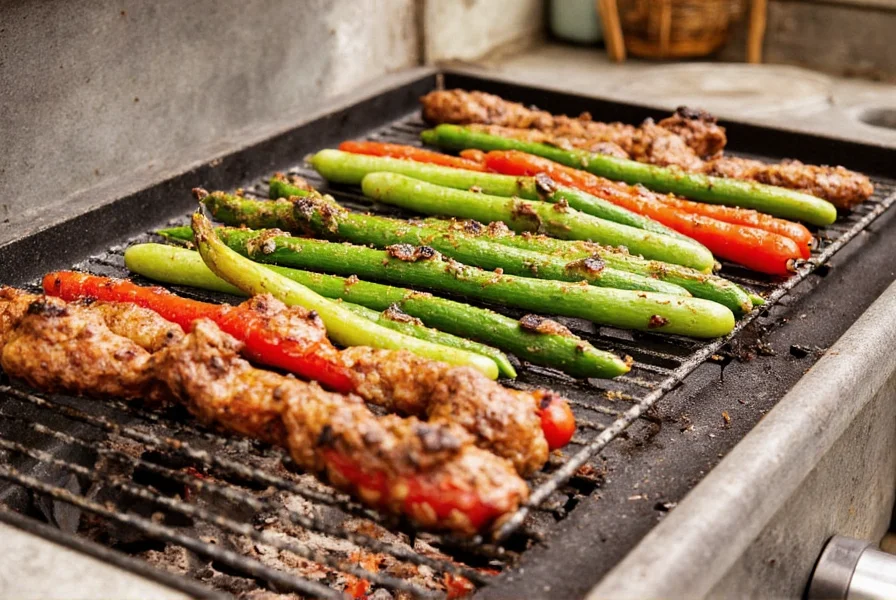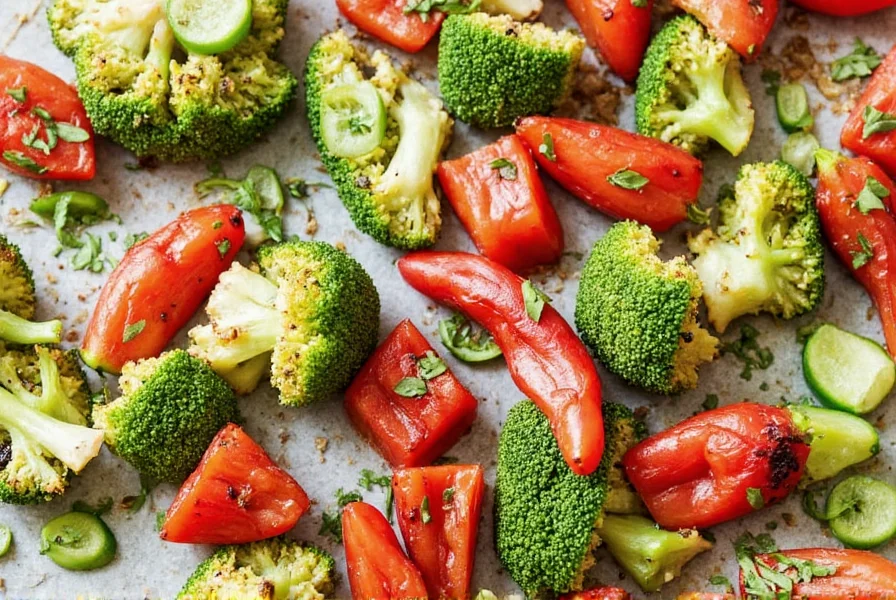The best vegetables to grill include asparagus, bell peppers, zucchini, eggplant, corn on the cob, mushrooms, red onions, and cherry tomatoes. These vegetables hold up well to high heat, develop delicious char marks, and maintain their texture without falling apart on the grill.
Grilling vegetables transforms their natural flavors through caramelization and smoky char, creating dishes that are simultaneously simple and sophisticated. Whether you're hosting a summer barbecue or looking for healthy weeknight dinner ideas, knowing which vegetables perform best on the grill can elevate your outdoor cooking game significantly.
Why Grilled Vegetables Deserve a Spot on Your Menu
Grilled vegetables offer a perfect balance of nutrition and flavor that complements any meal. The direct heat of the grill creates Maillard reactions that develop complex flavors while preserving nutrients better than boiling. Unlike steamed or roasted counterparts, grilled vegetables develop those desirable char marks that add smoky depth without requiring excessive oil or fats.
Top Vegetables for Grilling: A Comprehensive Guide
Certain vegetables naturally excel on the grill due to their density, water content, and structural integrity. Here's a detailed breakdown of the best options and how to prepare them:
| Vegetable | Prep Time | Grill Time | Temperature | Special Tips |
|---|---|---|---|---|
| Asparagus | 5 minutes | 8-10 minutes | Medium-high | Toss in olive oil, lay perpendicular to grates |
| Bell Peppers | 10 minutes | 12-15 minutes | Medium | Quarter lengthwise, remove seeds |
| Zucchini | 7 minutes | 10-12 minutes | Medium-high | Slice lengthwise 1/2 inch thick |
| Eggplant | 10 minutes | 12-15 minutes | Medium | Salt slices first to remove bitterness |
| Corn | 5 minutes | 15-20 minutes | Medium | Soak in water first, grill in husk |
Mastering Vegetable Preparation Techniques
Proper preparation makes the difference between grilled vegetables that stick to the grates and those that develop perfect char marks. For vegetables like zucchini and eggplant that contain high water content, salting before grilling draws out excess moisture and prevents steaming. Cut vegetables to appropriate thickness—too thin and they'll fall through the grates, too thick and they won't cook through properly.
When considering how to grill vegetables without sticking, proper oiling is essential. Use a high smoke-point oil like avocado or grapeseed oil rather than olive oil, which can burn at high temperatures. Toss vegetables in oil just before grilling rather than marinating for extended periods, which can make them soggy.
Temperature Control for Perfect Results
Understanding grill temperature zones creates versatility in your vegetable grilling. Direct heat (400-500°F) works best for quick-cooking vegetables like asparagus and mushrooms, while indirect heat (300-350°F) suits denser vegetables like potatoes and whole artichokes. The best temperature for grilling vegetables typically falls between medium and medium-high, allowing for proper caramelization without burning.
For beginners wondering how long to grill vegetables, a general rule is 8-12 minutes for most medium-density vegetables, flipping halfway through. Use the poke test—vegetables should yield slightly when pressed with tongs but maintain their structure.
Flavor Enhancement Strategies
While high-quality vegetables need minimal seasoning, strategic flavor additions can elevate your grilled creations. Try these perfect grilled vegetable recipes approaches:
- Before grilling: Toss in olive oil, salt, and pepper. For Mediterranean flavors, add dried oregano and garlic powder.
- During grilling: Baste with herb-infused oil or a light citrus marinade.
- After grilling: Finish with flaky sea salt, fresh herbs, lemon zest, or a drizzle of aged balsamic.
Consider flavor pairings when planning your best vegetables to grill for summer menu. Bell peppers complement onions beautifully, while asparagus pairs wonderfully with lemon and Parmesan. Corn takes well to chili-lime seasoning, and mushrooms develop incredible umami when brushed with soy sauce during grilling.

Avoiding Common Grilling Mistakes
Even experienced grillers make these frequent errors when preparing vegetables:
- Overcrowding the grill: Creates steam instead of char. Leave space between pieces for proper air circulation.
- Moving too soon: Wait until vegetables release naturally from the grates before flipping.
- Skipping the preheat: A properly preheated grill (15-20 minutes) ensures even cooking and prevents sticking.
- Using wet vegetables: Pat produce dry before oiling to ensure proper searing.
Serving Suggestions for Maximum Impact
Grilled vegetables shine as standalone sides but can become centerpieces with thoughtful presentation. Try these approaches:
- Arrange on a platter with complementary colors (red peppers next to green zucchini)
- Drizzle with herb-infused oil and sprinkle with toasted nuts
- Serve room temperature as part of a Mediterranean mezze platter
- Chop and incorporate into grain salads for added texture
- Stack in alternating layers for visually striking vegetable stacks
For those exploring healthy grilled vegetable recipes, consider adding grilled vegetables to grain bowls, wrapping them in flatbreads, or tossing with pasta for complete meals that satisfy both vegetarians and meat-eaters alike.

FAQs About Grilling Vegetables
Which vegetables should I avoid grilling?
Leafy greens like spinach and delicate vegetables such as snow peas generally don't hold up well to direct grilling. Instead, use a grill basket for these items or opt for sturdier vegetables like those mentioned in our guide. Thinly sliced cabbage works well when placed directly on the grill, but most leafy vegetables are better suited for quick sautéing.
How do I prevent vegetables from falling through the grill grates?
Cut vegetables into appropriate sizes (1/2 to 1 inch thick), use a grill basket for smaller items, or place them perpendicular to the grates. For vegetables like cherry tomatoes, thread them onto skewers after partially freezing them. Proper oiling of both the vegetables and the grates also helps prevent sticking and falling through.
Can I grill frozen vegetables?
It's best to thaw frozen vegetables completely and pat them dry before grilling. Frozen vegetables contain excess moisture that will steam rather than char when placed directly on the grill. Fresh vegetables always produce superior results for grilling, but if using frozen, choose varieties like corn or peppers that hold their structure well after thawing.
What's the best oil for grilling vegetables?
Use oils with high smoke points like avocado oil (smoke point 520°F), grapeseed oil (420°F), or refined coconut oil (450°F). These withstand grill temperatures without burning. Avoid extra virgin olive oil for high-heat grilling as its smoke point is relatively low (325-375°F), though it works well for finishing after grilling.
How far in advance can I prepare vegetables for grilling?
You can wash and cut most vegetables up to 24 hours in advance and store them in airtight containers in the refrigerator. However, wait to toss them with oil and seasonings until just before grilling. Some vegetables like eggplant benefit from salting 30-60 minutes ahead to draw out moisture, but extended marinating can make vegetables soggy and prevent proper charring.











 浙公网安备
33010002000092号
浙公网安备
33010002000092号 浙B2-20120091-4
浙B2-20120091-4